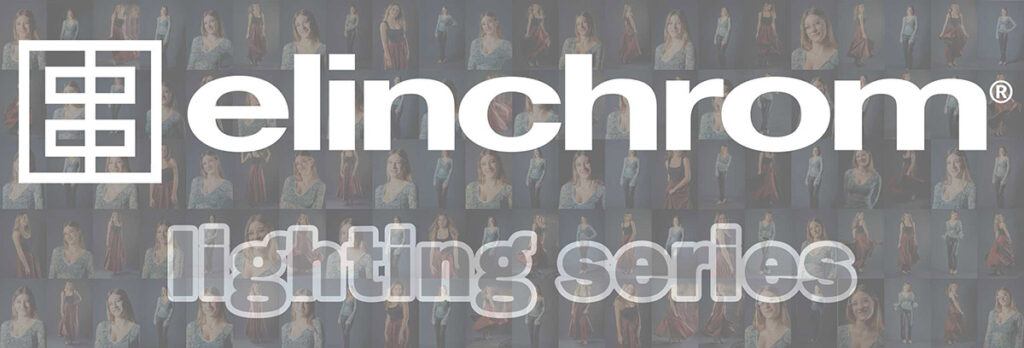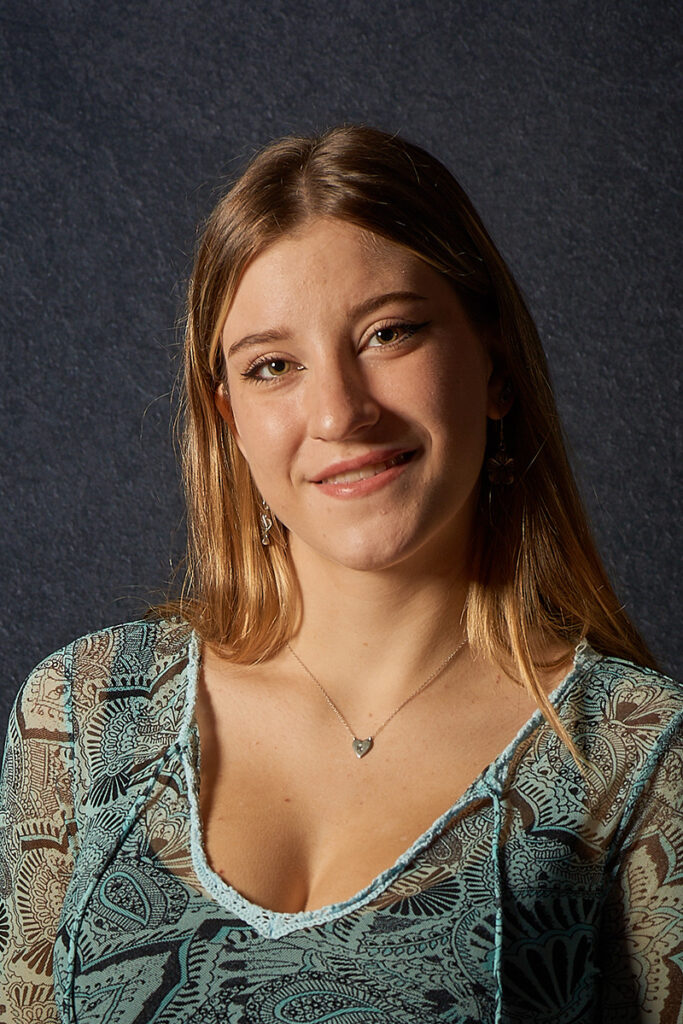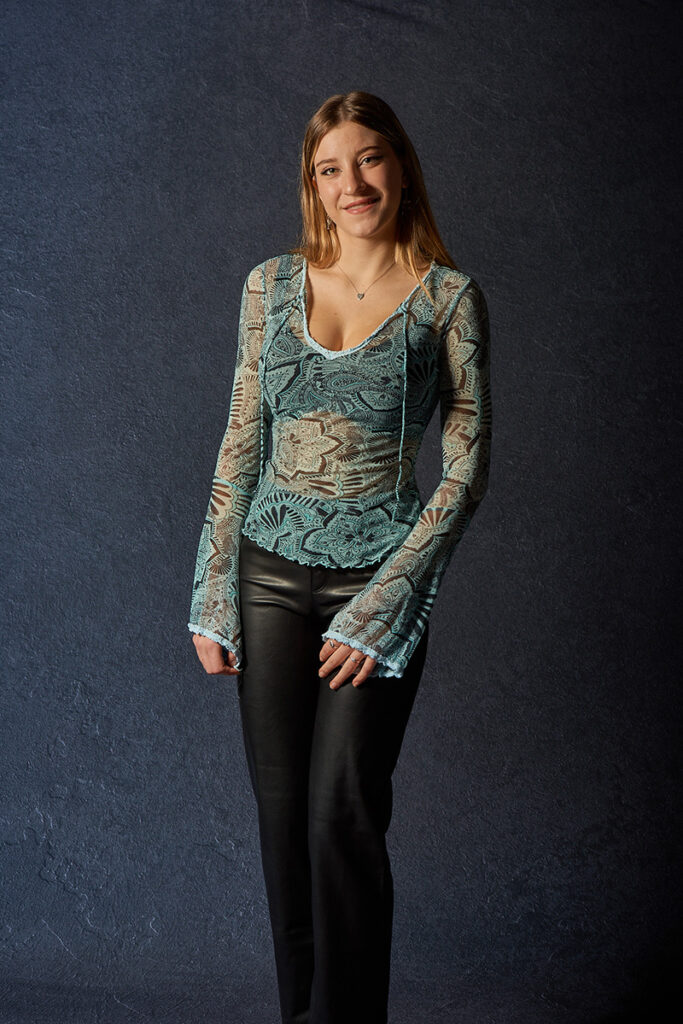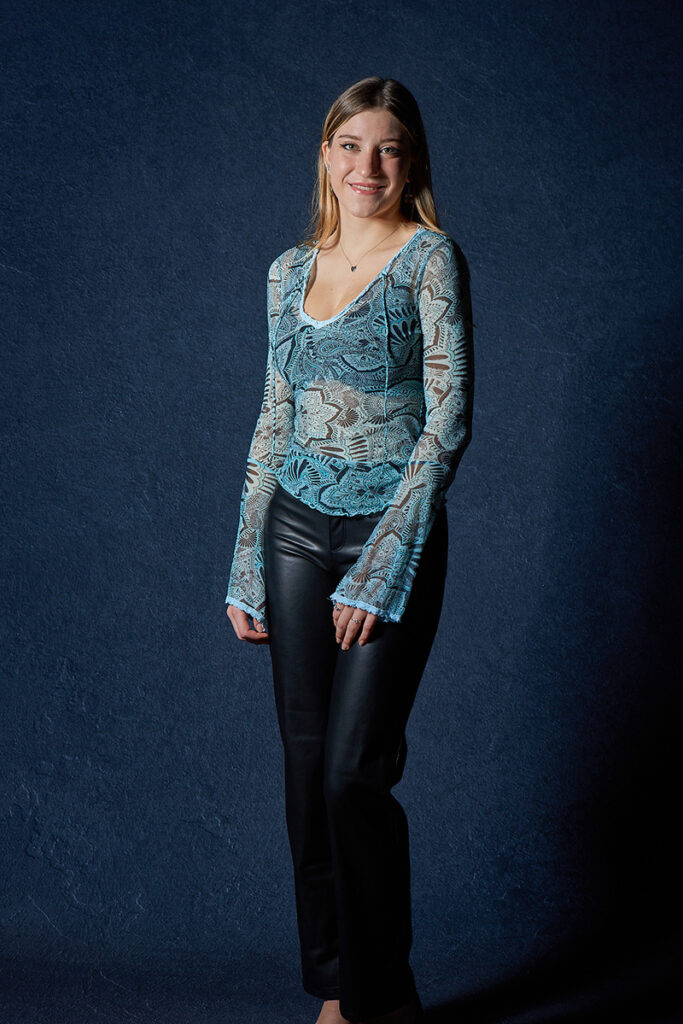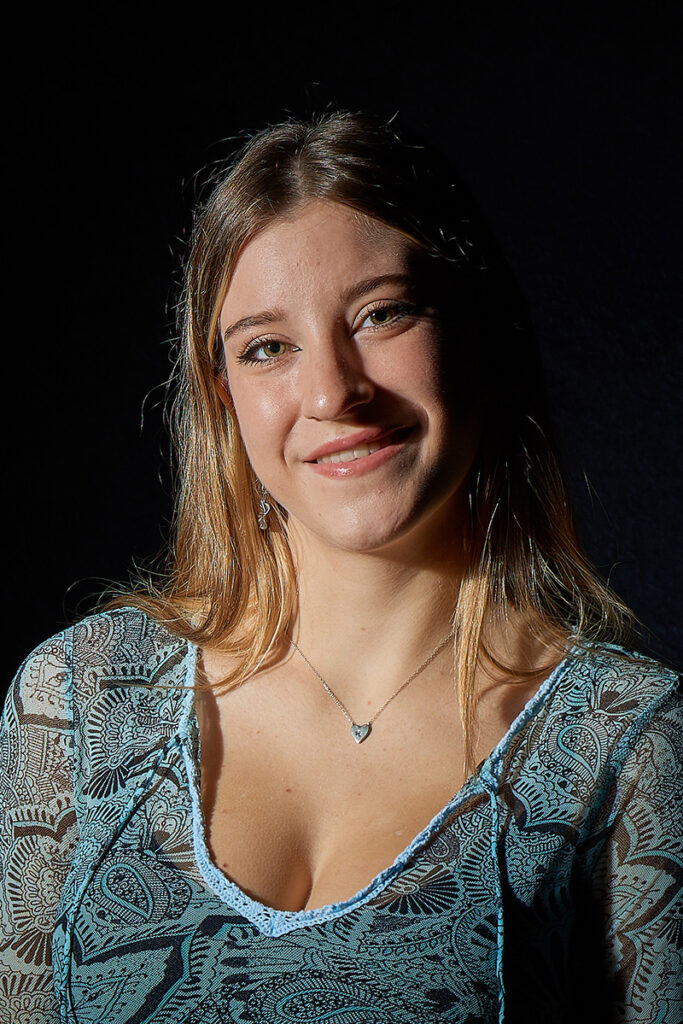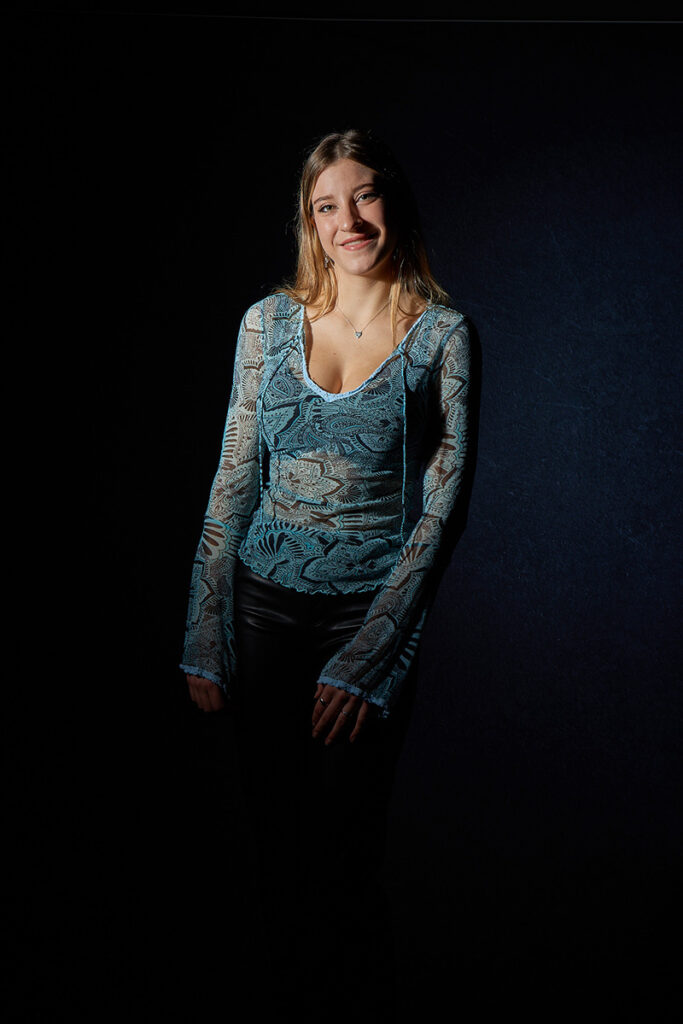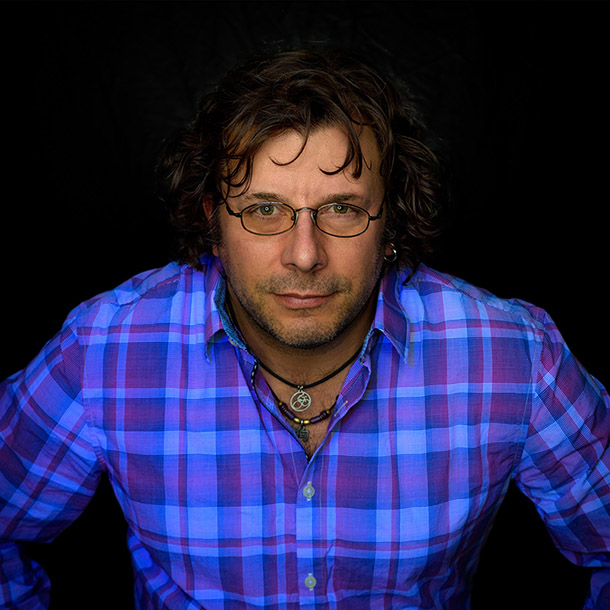Welcome to the sixth installment of our new monthly that highlights a different Elinchrom Light Shaper or Lighting Technique, with sample images (full length and cropped headshots) and lighting diagrams. All the images were photographed with the same model and outfit (standing in the same spot on the background – about 3 feet away), the same day in the same blacked out studio, with the same strobes at the same height (forehead height) & distance (about 5 feet) from the model and the same camera setup. I tried to remove as many obstacles as possible so we can compare light shaper effects.
I used an Elinchrom FIVE battery monolight triggered by the Elinchrom Transmitter Pro. My trusty Gossen Digisky light meter ensured consistent exposure values – it has an integrated Skyport transceiver to remotely trigger the FIVE. My Nikon D810 had a Tamron 85mm f/1.8 lens and all was mounted on a Vanguard VEO 3+ 263CB tripod. Camera settings are ISO64, f/8, 1/125s We used an Easiframe backdrop system with the Grey Texture backdrop. I tethered my camera into Capture One on my laptop with a Tether Pro USB-C to C cable and connected my laptop to a large screen TV with a TetherPro HDMI cable so we could review images on the big screen.
Special thanks to Phil and RevPrint Studio (https://www.revprint.com) for the use of their space. Phil hosts workshops featuring Elinchrom gear via West Toronto Photography Group (https://www.wtpg.ngo/)
I’ll start with light shapers and techniques for portraiture. This month, our focus is on the Elinchrom Standard Reflector & Grid 21cm KIT (8.3″), with and without the optional grids.
Standard reflectors are often overlooked in place of their more-flashy cousins, the Beauty Dish. But a Standard reflector is far more versatile – as a key light, as focused kicker lights or to ensure there’s no light spill when using umbrellas.
Standard reflectors of this size, with their silver interior, can also be called high-performance reflectors due to how intense the light is from them. I dropped 3 stops of light when switching from the Beauty Dish to the Standard reflector.
The Standard reflector creates noticeably crispier shadow transitions but less contrast than the Silver Beauty Dish. The difference in colour temperature is due to the lower power required with the Standard reflector compared to the Beauty Dish. Light falloff is a little more even as the double-deflector of the Beauty Dish creates compound shadows. Specular highlights are smaller as the Standard reflector is 1/3 the size of the Beauty Dish.
The magic happens when you add a 30° grid to the Standard reflector. Shadow transitions are really sharp and defined and contrast is almost maximum. Falloff is barely there as the light beam becomes so focused. I had to increase the output of my FIVE by 3.5 stops to get the same meter reading as the grid significantly cuts output. There is very, very little light on the background. Highlights are very sharp and every loose hair is illuminated by this harsh, direct light. I like how Maya is really separated from the background here – the hard light on the left defines her face and hair line and the dark shadow down her arm on the right creates separation down that side of her body. She’s not blending into the background.
When would you use the Standard reflector and when would you add grids? If I’m trying to replicate harsh daylight, I’ll use a Standard reflector. The light pattern is very similar to mid-afternoon sunlight – remember to position your key light high and down to get your angles just right. Because the reflector is so hard, I wouldn’t use it as any kind of fill light. Fills should be soft – hence the term “fill”. If I wanted a little harsher light for my key, I would add the grid. The Standard reflector is also a great choice for product photography, as well – especially with the grid to create more background separation.
You’ll see in future articles, a gridded Standard reflector is ideal as a “kicker” light – you can target a certain area, such as hair. Stay tuned for more on that.
Share some of your favourite images taken with a Standard reflector on our Facebook page or tag us on Instagram #photonewscanada #elinchromlightshaper.
Next month, I’ll show the effects of rectangular softboxes with and without grids. At the end of the series, we’ll compare each of the Elinchrom light shapers to each other. See you next month!
Read the previous articles:
Elinchrom Light Shapers and Lighting Techniques – #Episode 1
Elinchrom Light Shapers and Lighting Techniques – #Episode 2
Elinchrom Light Shapers and Lighting Techniques – #Episode 3
Elinchrom Light Shapers and Lighting Techniques – #Episode 4
Elinchrom Light Shapers and Lighting Techniques – #Episode 5
Items Discussed
Author: Will Prentice
A portrait, fine art and commercial photographer for 30 plus years, Will Prentice is not just a contributor to PHOTONews magazine, but also host of PHOTONewsTV, owner of Captura Photography+Imaging and Technical Support/Brand Manager for Amplis Foto, Canada’s largest distributor of photographic equipment.
Will teaches photographers of all skill levels how to improve their craft – from creative photo projects to picking the right gear for their needs to flattering lighting to getting the best expressions to creating final images for screen and print. His unique style of highly detailed images with perfect tonality, wide dynamic range and stunning colour is instantly recognizable. Commercial clients rely on Will’s creative eye and mastery of lighting.
When he’s not behind the camera or in front of a class, you’ll find Will outdoors in any weather – usually on one of his bikes or enjoying time with his grandchildren.



